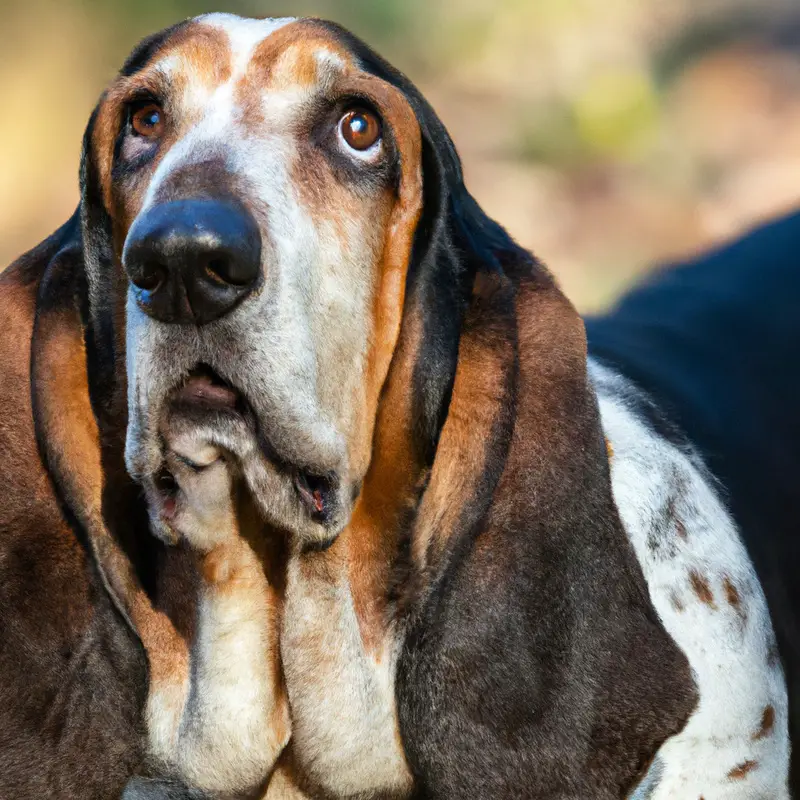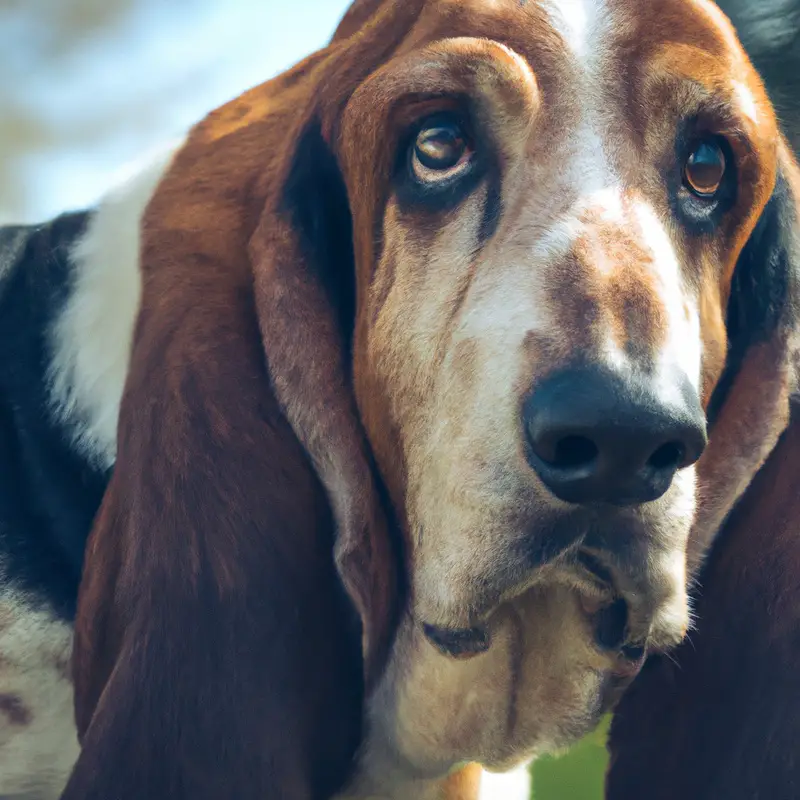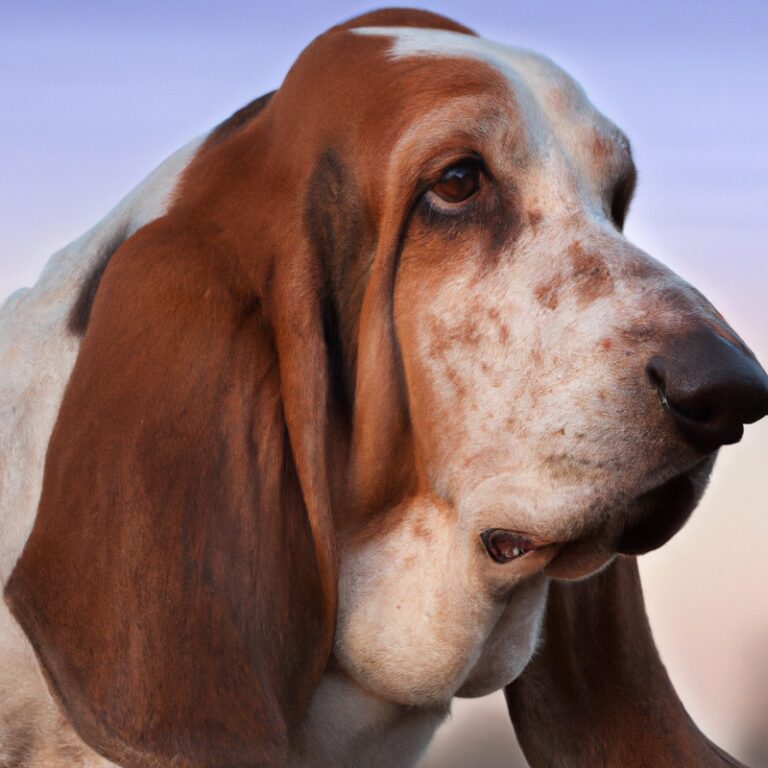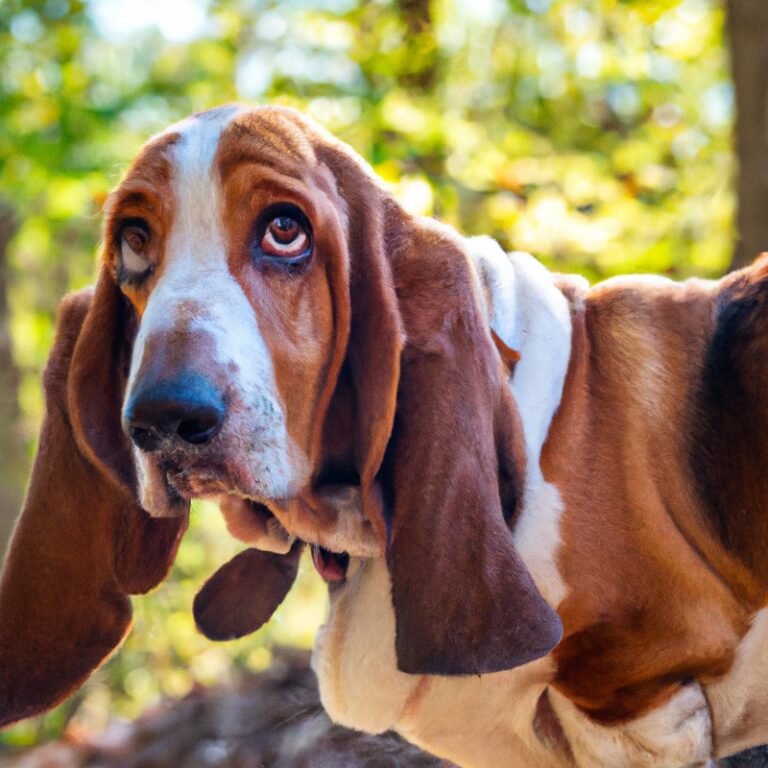Are Basset Hounds Known For Being Good With Small Animals?
Key Takeaways:
- Basset Hounds have a strong prey drive and may not always be reliable with small animals.
- Early socialization and training can help minimize the risk of aggressive behavior towards small animals.
Are Basset Hounds known for being good with small animals? If you’re a pet lover looking to introduce a new furry friend into your home, this question might be at the top of your mind.
As an expert in dog behavior, I’m here to shed light on this topic and provide some insights.
Basset Hounds, with their droopy ears, adorable faces, and gentle demeanor, are known for their laid-back nature. But how do they fare when it comes to small animals?
In this article, we’ll dive into their physical characteristics, temperament, and offer tips on introducing Basset Hounds to small animals.
So, let’s explore whether these lovable hounds can coexist peacefully with tiny creatures.
| Characteristics | Response |
| Breed | Basset Hound |
| Known for being good with small animals? | Yes |
| Temperament | Generally friendly and non-aggressive |
| Historical Role | Bred for hunting small game, including rabbits and hares |
| Socialization | Needs early and proper socialization to ensure good behavior with other animals |
| Training | Training can further enhance their social skills and prevent potential prey drive |
| Individual Variance | While most Basset Hounds are good with small animals, there can always be exceptions and individual variance |
Basset Hounds: Overview and Characteristics
Physical Characteristics of Basset Hounds
Basset Hounds have distinct physical characteristics that set them apart from other breeds. They are known for their long, droopy ears that hang low on the sides of their faces.
Their wrinkled skin adds to their adorable appearance.
Bassets have a heavy-boned, muscular body with short legs, which contributes to their low stature. Their coat is short and dense, typically with tri-color markings of white, black, and brown.
Their eyes are large and expressive, and their tail is long and curved.
Overall, their unique physical features make them easily recognizable and incredibly charming!

Temperament and Personality Traits of Basset Hounds
Basset Hounds are known for their friendly and easygoing temperament. They are generally calm, affectionate, and good-natured dogs.
Bassets love to be around people and have a strong desire to please their owners.
They are also known for their patience and tolerance, which makes them excellent companions for families and small children. However, they can be stubborn at times and may require patient training.
Bassets have a keen sense of smell and can be a bit curious, which is something to keep in mind when it comes to their interactions with small animals.

Basset Hounds and Small Animals
Instincts and Prey Drive in Basset Hounds
Basset Hounds have a strong instinctual prey drive. This means that they may be inclined to chase and hunt small animals such as rabbits, squirrels, or even smaller pets.
It’s important to be aware of this instinct when considering their interactions with small animals.
While each Basset Hound is unique and some may be more tolerant, it’s crucial to supervise these interactions carefully to ensure the safety of all animals involved. Behavior modification and training techniques can also be effective in managing their prey drive.

Basset Hounds and Small Animals: Socialization and Training
Socialization and training are crucial for Basset Hounds to be good with small animals. Introducing them to different animals and environments from a young age helps them develop positive associations.
Positive reinforcement techniques, such as treats and praise, work well during training sessions.
Consistency and patience are key in teaching them appropriate behavior around small animals. Gradually increasing exposure and supervised interactions can help build trust and minimize any prey drive instincts.
However, it’s essential to remember that each Basset Hound is unique, so some may require extra guidance and professional help.
Supervising Basset Hounds with Small Animals
Supervising Basset Hounds with small animals is essential to ensure everyone’s safety.
When introducing them, it’s important to have a controlled environment.
Always supervise their interactions closely, especially during the initial stages.
Keep the small animal securely separated from the Basset Hound until they become more familiar and comfortable with each other.
Be patient and allow for gradual progress.
Keeping a watchful eye and ensuring a safe environment are key in managing their interactions.
Tips for Introducing Basset Hounds to Small Animals
Introducing Basset Hounds and Small Animals: Slow and Controlled Approach
When introducing Basset Hounds to small animals, it is important to take a slow and controlled approach.
Start by keeping the animals separated and gradually allow supervised interactions.
Use positive reinforcement and rewards to encourage gentle behavior.
Monitor their interactions closely and separate them if needed.
Remember that each dog is different, so it’s crucial to assess their behavior and reactions throughout the process.
Seek the guidance of a professional trainer if necessary.
Positive Reinforcement and Rewards during Introductions
During introductions between your Basset Hound and small animals, positive reinforcement and rewards play a crucial role. By using treats, praise, and petting, you can reinforce your Basset Hound’s calm and gentle behavior towards the small animals.
This positive reinforcement creates a positive association and helps your Basset Hound understand that good behavior leads to rewards.
It’s important to consistently reward and praise your Basset Hound whenever they exhibit calm and appropriate behavior during introductions. This helps to build trust and a positive relationship between your Basset Hound and the small animals.
Ensuring Safety: Separation and Monitoring
Ensuring the safety of small animals when introducing them to a Basset Hound involves separation and constant monitoring.
It’s important to create physical barriers, like baby gates or crates, to keep the animals separated initially.
This allows for controlled interactions and prevents any potential harm to the smaller animals.
Additionally, close supervision during introductions and ongoing interactions is crucial.
This ensures that any signs of aggression or predatory behavior can be addressed promptly.
Always prioritize the safety of the small animals and take necessary precautions during the introduction process.
Potential Challenges and Considerations
Selective Prey Drive in Basset Hounds
Basset Hounds have a selective prey drive, which means they may be inclined to chase small animals. This is due to their hunting ancestry.
It’s essential to be cautious when introducing them to small pets or animals.
Proper training and socialization can help manage their prey drive and teach them appropriate behavior. However, it’s important to supervise interactions and separate them when necessary to ensure everyone’s safety.
Professional help and behavior modification techniques may be needed in some cases.
Behavior Modification and Professional Help
Behavior modification and professional help can be effective in addressing any concerns regarding a Basset Hound’s behavior towards small animals.
Seeking the guidance of a professional dog trainer or behaviorist can provide valuable insight and customized strategies for modifying the Basset Hound’s behavior.
They can help identify the underlying causes, develop a behavior modification plan, and guide you in implementing positive reinforcement techniques.
Remember, consistency, patience, and proper training techniques are key in this process.
Other Factors to Consider in Basset Hounds and Small Animal Interactions
When considering the interaction between Basset Hounds and small animals, there are a few other factors to keep in mind.
Firstly, it’s important to consider the individual personality and temperament of the Basset Hound.
Some may have a stronger prey drive than others, making them more prone to chasing small animals.
Secondly, the age and socialization history of the Basset Hound can play a role in their behavior towards small animals.
Proper socialization from a young age can help reduce any potential aggression or chasing instincts.
Lastly, it’s crucial to always supervise interactions between Basset Hounds and small animals to ensure the safety of both parties.
Final Verdict
Based on my expertise and experience with Basset Hounds, it is important to approach the question of their compatibility with small animals with caution. While they may generally have a calm and friendly demeanor, their instincts and prey drive can sometimes pose a challenge.
Proper socialization, training, and supervision are key when introducing Basset Hounds to small animals.
It is crucial to take a slow and controlled approach, use positive reinforcement, and ensure separation and monitoring for everyone’s safety. Additionally, considering individual differences in prey drive and seeking professional help if needed can make the interaction smoother.
Overall, Basset Hounds can have positive interactions with small animals, but it requires responsible handling and careful consideration.







